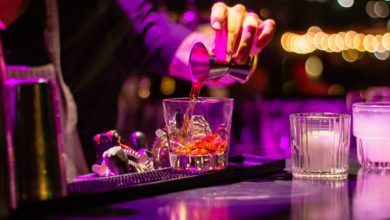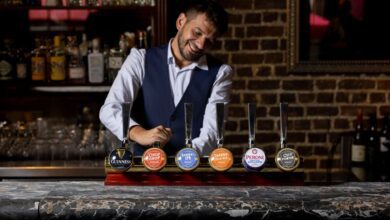How to tailor interactions for drive-thru customers in the QR industry
By Ori Bauer, CEO of Dynamic Yield, a Mastercard company

Register to get 1 free article
Reveal the article below by registering for our email newsletter.
Want unlimited access? View Plans
Already have an account? Sign in
In 2022, the quick service (QSR) and takeaway industry in the UK amounted to a whopping £21bn, up from the previous year’s approximate £20bn. This year, the market is forecast to reach greater heights of £22bn. The UK’s 2,256 drive-thrus took in just over £2.8bn in the year to the end of January, according to market researchers NPD Group.
In the fast-paced world we live in, the drive-thru attracts nearly 500 million visits a year, thanks partly to convenience and speedy purchases. So, it makes sense that many brands, less known for their drive-thrus, are jumping on the bandwagon in the UK, eager to provide consumers with a seamless experience on the go.
The latest brand swapping high streets for roundabouts is Gail’s. The luxury bakery chain has set its sights on roadside dining, putting feelers out for 10 sites in south-east of England, where it can serve bagels and brioches to loyal customers straight through their car windows.
The QSR chain Leon and the premium burger chain Five Guys have also opened drive-thrus in recent years, and McDonald’s already uses outdoor digital menu boards in the drive-thru to personalise items in real-time based on key factors such as time of day, current restaurant traffic, and popularity.
Consumer demand for quick service convenience looks set to continue at speed, making it prime for personalisation, which can help businesses maximise results by offering tailored drive-thru experiences – yet most are unable to effectively scale these efforts.
When it comes to the UK QSR industry, mobile has become a preferred channel for many customers, with takeaways and delivery on the rise. For known mobile customers, brands can recommend products based on a customer’s previous orders, loyalty status, engagement info, and even dietary preferences.
But quick service restaurants are still missing out on a slice of the action; mobile currently represents just 10% of QSR transactions, and it takes longer to generate incremental revenue than focusing on a larger segment of unidentified customers.
By using technology, brands can cater to both identified and unidentified guests throughout the entire order flow – increasing order sizes and revenue without compromising on lane speed or order fulfilment times – achieving personalisation for 100% of drive-thru visits.
A personalised drive-thru experience can take many forms, from showing a tailored menu board layout to listing the most relevant items and providing product recommendations, with each able to be baked into the entire order flow: before the order starts, during the order (after adding items to the basket), and ahead of checkout.
Maybe still unknown to many brands, this can be achieved regardless of whether the restaurant is serving a loyal customer, a mobile app-using consumer, or a driver who may never visit the chain again – each customer requiring a different opportunity for personalisation.
In some cases, even identifiable guests could be considered “unknown” if the data available is very limited, but just because a brand can’t identify a customer doesn’t mean they can’t tailor the experience by leveraging the information that is available.
By taking advantage of contextual data such as location, traffic patterns, and time of day, restaurants can dynamically personalise the digital ordering process. This could involve recommending menu items based on popular choices at a particular drive-thru during specific hours, ensuring that customers are offered complimentary items rather than repetitive ones. For example, items might be offered all day (such as coffee), but they sell better during breakfast hours than at any other time. Personalisation can even extend to adapting menus based on factors like the weather.
Regardless of a customer’s identity, the existing products in their basket can tell restaurants a lot about what other products they might be interested in, their preferences, and the propensity to add other items to the order. Brands want to make sure the items they recommend are the best options for that specific order. For example, a customer who just ordered ice cream is not likely to follow it up with a meal, but a cookie might pique their interest, which is an important nuance that only personalisation technology designed specifically for QSRs would address.
There is huge potential for personalisation to allow brands to engage with their customers better and cultivate loyalty. When QSRs offer hyper-personalised experiences, they foster a deeper connection with customers. By curating menus for the known and unknown customer in a way that either aligns with each customer’s preferences or environment and circumstances, brands can create a sense of care and relevance, increasing the likelihood of repeat visits. Long-term engagement through personalisation also allows for continued optimisation and analysis, enabling restaurants to refine their offerings and enhance customer satisfaction over time.
The QSR industry in the UK is thriving, with drive-thrus playing a significant role in generating billions of pounds in revenue each year. To tap into the potential of unidentified visitors and cultivate loyalty, personalisation combined with the right technology and methodology is the key.
By leveraging contextual data, quick service restaurants can deliver tailored experiences to both known and unknown customers, enhancing the entire drive-thru journey. From personalised menu boards to strategic product recommendations, personalisation fosters deeper connections, increases repeat visits, and cultivates brand loyalty. As the demand for quick service convenience continues to rise, integrating personalisation into drive-thru operations is crucial for future success in this competitive market.







